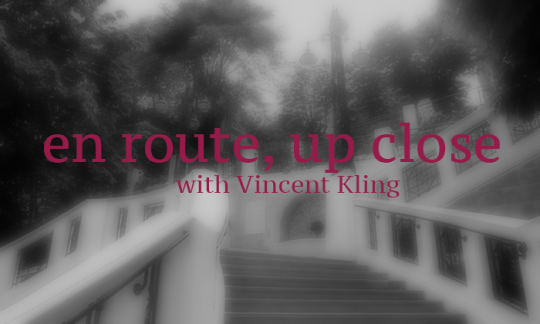This month Vincent Kling gives us his take on what Die Strudlhofstiege isn’t—detective fiction—and its main protagonist, language.
“a collection of scenes, dialogues, and portraits,
humorous or affecting, intermixed with much wit,
and with much learning, original or borrowed.”
—Walter Scott on Laurence Sterne
“to the highest excess rambling, excursive, and
intermingled with the greatest absurdities.”
—Scott on Rabelais
What Strudlhofstiege Isn’t. It doesn’t take long for a motivated reader of Strudlhofstiege to develop cognitive dissonance. Does any other novel so totally thwart the “Apparent Narrative Rationale”—George Saunders’s name for “what the writer and reader have tacitly agreed the book is ‘about’” (The Braindead Megaphone)? Behind the three-pillared façade erected by realist-minded readers and upheld by Doderer’s impish misdirection—the intricate plot, the memorable characters, the vivid settings—stands a novel shaped from vastly different models and traditions.
Strudlhofstiege is brilliantly plotted; all that’s missing is a plot. The novel undercuts rising action by “building up” to a horrible accident that was announced in the very first sentence. Other elements are patchworks of trite set pieces and inane crime-story devices requisitioned with such overt irony as to throw the very foundations of narrative into question—an unsuspected twin, an inept plan to smuggle cigarettes, an elopement foiled by an irate father. Doderer himself wrote, “A work of narrative art is all the more successful the less one can get an idea of it through a plot summary.” As early as 1928, Ronald A. Knox had drawn up a tongue-in-cheek “Decalogue” of “thou-shalt-nots” for detective fiction; number 10 forbade twins or doubles, but Doderer treats us to both.
The characters are striking, but as dexterously elaborated variations on ancient types or stock figures, not as individuals like those found in Dostoyevsky or James, Proust or Mann. Herr Stangeler is the classic peevish old man, the senex iratus, for instance: Scheichsbeutel the cunning servant, the servus callidus; Editha Pastré the strumpet ormeretrix; Eulenfeld the blustering soldier, miles gloriosus; and Thea Rokitzer the innocent young girl, the puella delicata morphed into the Viennese “süßes Mädl.” These unforgettable characters function as vehicles, not ends in themselves, just as Leopold Bloom and Stephen Daedalus in Ulysses are symbolic recreations of Odysseus and Telemachus as well as brilliantly plausible modern Dubliners.

